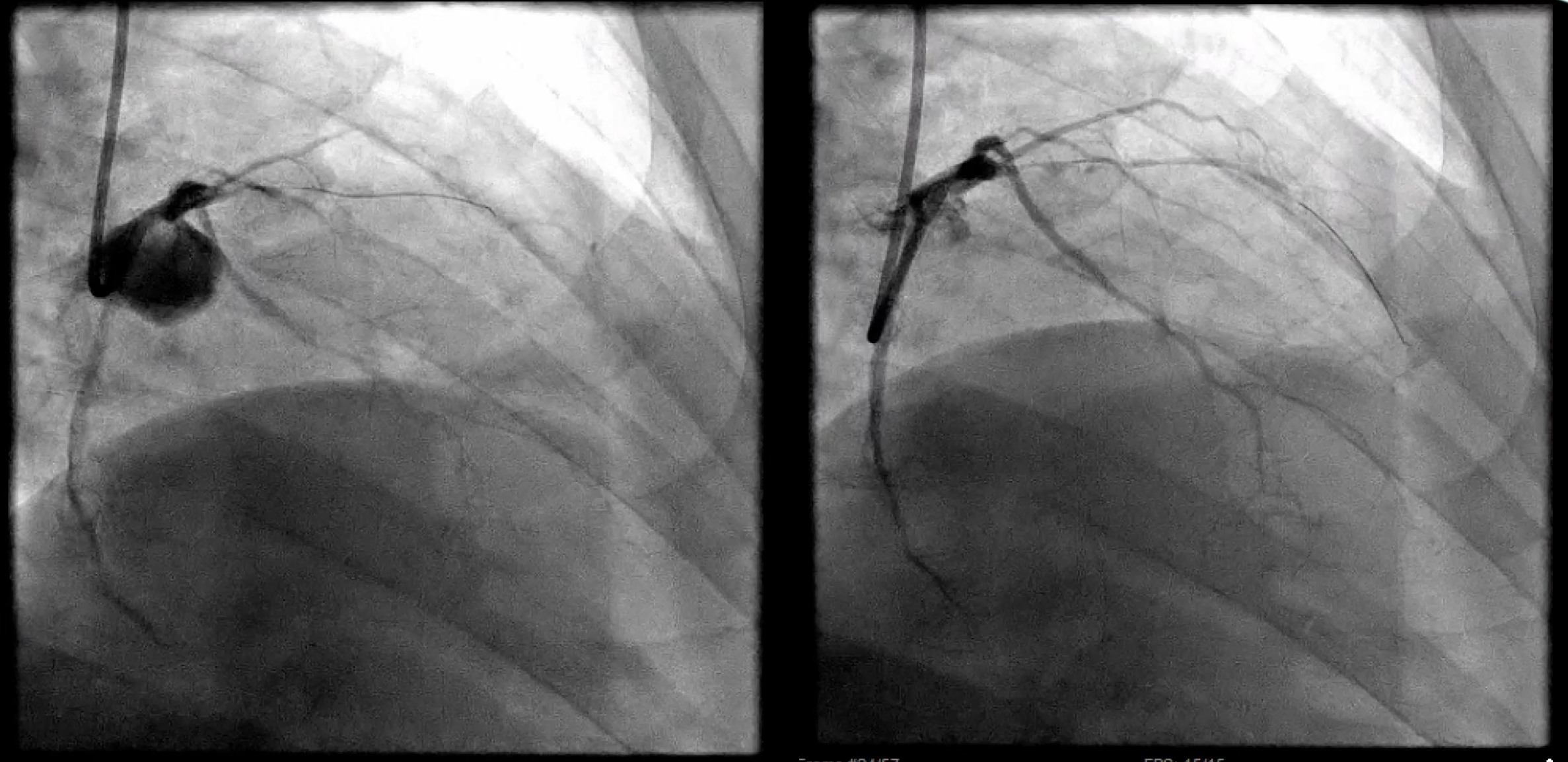
Chronic Total Occlusions (CTO)
Capital Cardiology Associates offers an advanced innovative approach to treat patients with chronic total occlusions (CTO).
CTO percutaneous coronary intervention is a minimally invasive technique to treat patients with a chronic total blockage of the coronary arteries.
What you need to know about CTO.
-
• Known coronary artery disease or history of myocardial infarction
• Excessive tobacco use
• High LDL cholesterol, low HDL cholesterol
• Diabetes
• Sedentary lifestyle
• Hypertension
• Family history of premature disease
• End-stage kidney disease
• Obesity
• Postmenopausal women
-
Individuals with CTOs may experience the following symptoms:
• Chest pain, pressure or tightness (angina pectoris)
• Shortness of breath
• Dizziness
• Fatigue
• Nausea
• Pain in the upper body and arm
-
The procedure has a slightly elevated risk of kidney damage due to intravenous contrast use and bleeding at the entry site into arteries in the groin. However, most other risks are similar to those seen for more routine angioplasty and can include:
• Bleeding at the puncture site
• Damage to the blood vessel at the puncture site
• Sudden closure of the coronary artery
• Small tear in the inner lining of the artery
• Heart attack
Message from the Director
Prior to 2019, options for patients with chronic total occlusions in the Capital District were limited. Seeing this void, I decided to dedicate a significant amount of time and effort to start the first dedicated CTO program serving Albany, New York, and the surrounding areas. Since starting the program, we have helped many patients regain significant quality of life that was limited due to these chronic blockages. Thank you for visiting. If you have been diagnosed with CTO, request a consultation today.
What Is CTO PCI?
CTOs are blockages that have typically been present for more than three months.
These blockages are a result of severe build-up of fatty deposits or plaque within the arteries (atherosclerosis) and are one of the complications from coronary artery disease (CAD). CAD occurs when the artery or arteries that supply blood to the heart become narrowed or blocked because of atherosclerosis. When the heart does not receive enough blood, a person may have chest pain (angina), shortness of breath or a heart attack. These symptoms occur with exertion and sometimes at rest.
The CTO Procedure
During the CTO procedure, the interventional cardiologist enters the patient’s arteries through a vessel near the groin or wrist. We use catheters (small tubes), wires, and other minimally invasive techniques to approach the CTO blockage. Standard PCI (angioplasty) involves passing the wire through a blockage and performing angioplasty using small balloons and stents. With CTO blockages, specialty wires and catheters are required in order to penetrate the CTO blockage which can be very calcified. Once the wires and devices have crossed the blockage, standard PCI techniques are used to inflate a balloon and open the blockage using stents. This normalizes blood flow.
CTO intervention is more involved and complex than standard PCI, but the procedure is still minimally invasive. In fact, patients often go home the next day and in some cases, the same day. After the procedure, patients’ symptoms tend to improve.
What to Expect.
CTO PCI Procedure: Recovery and Follow-up
At the start of the procedure, patients receive sedation as in usual heart catheterization procedures. During the procedure, two catheters are placed in arteries (leg or wrist) to allow the ability to go forwards or backwards as needed. Following completion of the procedure, which takes approximately 2-4 hours, the catheters are removed.
First-time success rates approach 80%. In some cases, partial success occurs, and patients will be recommended to have a re-attempt 6-8 weeks later.
Many patients can be discharged the same day though depending on the complexity of the intervention, some patients will spend the night for observation and be discharged the next day.
Patients who undergo CTO PCI often have an improvement of their symptoms within days to weeks. Some patients notice an improvement even before discharge. Additionally, studies have shown that patients who have had CTO PCI have seen an improvement in their quality of life, including:
Reduced chest pain (angina)
Reduced shortness of breath
Increase in physical activity
Decrease in feelings of depression
Higher levels of energy
Dr. Krzysztof Drzymalski, FACC, FSCAI, grew up in Niskayuna, NY. He graduated Magna Cum Laude from Siena College with double degrees in Biology and Spanish. While at Siena College, he studied abroad at the Universidad De Deusto (Spain) and the Academy of Foreign Language Study (China). He completed a prestigious combined 8-year BA/MD program in Science, Humanities, and Medicine with Siena/Albany Medical College. He attended Albany Medical College to complete his Doctor of Medicine. Dr. Drzymalski’s post graduate training was an Internal Medicine Residency at Lahey Hospital and Medical Center (Burlington, Massachusetts). In 2015, he was awarded the Lahey Clinic Foundation Award for Excellence in Medical School Teaching, sponsored by TUFTS Medical School. He returned to Albany for his fellowship in Cardiovascular Medicine and subsequently another year of additional training in Interventional Cardiology. Dr. DeLago was his program director for his training in coronary intervention and structural heart disease.
Read Dr. Drzymalski’s Bio Here.
Scan or click to contact Dr. Drzymalski






